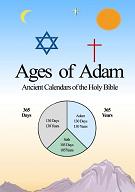1.
Dots or ellipses represent _________ in Mayan Calendar
glyph pictures.
a.
decades
a. decades
b. weeks
c. full moons
d. single days
2.
The 260-day-Tzolken-sacred-year develops from 20-periods
of __________ each.
a.
13-days
a. 13-days
b. 18-days
c. 13-kins
d. a. and c.
3.
The 360-day-Tun-civil-year is comprised of 18-Uinals
that have ________ per Uinal.
a.
20-days
a. 20-days
b. 18-days
c. 13-kins
d. none of the above
4.
The 260-day-Tzolken-sacred-year and
365-day-Haab-solar-year combine in the ___________
Calendar Round.
a.
20-year
a. 20-years
b. Mesopotamian
c. 52-year
d. 360-day-Tun-civil-year
5.
The special last 5-days of the 365-day-Haab-solar-year
are the Nameless Days or ________________.
a. Tun
a. Tun
b. Wayeb
c. Katun
d. Uinal
6.
Katun adds a prefix before Tun, which modifies the
meaning to become ______________.
a.
400-Tun-years.
a. 400-Tun-years.
b. 7,200-days.
c. 20-Tun-years.
d. b. and c.
7.
Baktun adds a prefix before Tun, which modifies the
meaning to become ___________________.
a.
400-Tun-years.
a. 400-Tun-years.
b. 20-Tun-years.
c. 144,000-days.
d. a. and c.
8.
Aztec, Incan and Mayan Calendars were sister
Mesoamerican Calendars that use similar mathematics.
a. True
a. True
b. False
9.
The 5200-year Great Cycle includes 5200-Tun-years and
may include provisions for
___________________________________.
a. up
to 26,000 years
a. up to 26,000 years
b. 5200-Haab-years
c. a. and b.
d. Artic Circle
10.
The 400-year Baktun Cycle segment of the Mayan Calendar
repeats 13 times for the ___________________________.
a.
5200-day-cycle Great Cycle
c. Katun 20-years
a. 52-year Calendar Round
b. 5200-Tun-year Great Cycle
c. Katun 20-years
d. b. and c.
11. The final
260-day-Tzolken-sacred-year in the
_______________________ multiplies 52-Tun-years x
5-Wayeb-days.
a. 400-year Baktun cycleCalendar Round
d. 360-day-Tun-year
a. 400-year Baktun cycle
b. 20-year l/s cycle
c. 52-year Calendar Round
d. 360-day-Tun-year
12. An 800-year
Generation Cycle is equal to _______________.
a. 2 Baktun cycles
a. 2 Baktun Cycles
b. 2 x 400-Tun-years of 360-days
c. 800-Tun-years
d. all above
13. Stelae sacred
pillars were erected following Katun 20-year cycles in
_________________.
a. England
a. England
b. Mesopotamia
c. Mesoamerica
d. Easter Island
14. Mesoamerican
lunar/solar calendars intercalated 210-days of l/s time
split for every Katun 20-year lunar/solar cycle.
a. True
a. True
b. False
15. Numerical
matching enables the last day of a ___________________
to cascade time
a. 354-day-lunar-year
a. 354-day-lunar-year
b. 364-day-calendar-year
c. 365-day-solar-year
d. 20-year-l/s-cycle
16. The Dresden Codex is
an important document that lists five planetary cycles
of _________.
a. Mars
a. Mars
b. Jupiter
c. Venus
d. Mercury
17. Vigesimal means a
mathematical base _____ numbering system.
a. 52
a. 52
b. 20
c. digits
d. 364
18. Jewish Calendar
Sabbath continuity regarding ____________ are
unrecognized in the classical Mayan Calendar.
a. 30-day months
a. 30-day months
b. Rosh Hashanah
c. Easter
d. 7-day weeks
19. A common dating
method for Mayan artifacts is __________.
a. Pre-Columbian
a. Pre-Columbian
b. Before Columbus
c. Before Christ
d. both a. and b.
20. Ages_of_Adam
numerically matches a 260-day-Tzolken-sacred-year with a
260-year-Tzolken-sacred-cycle.
a. True
a. True
b. False
c. Sometimes
d. Never
 Mayan Calendar Quiz
Mayan Calendar Quiz